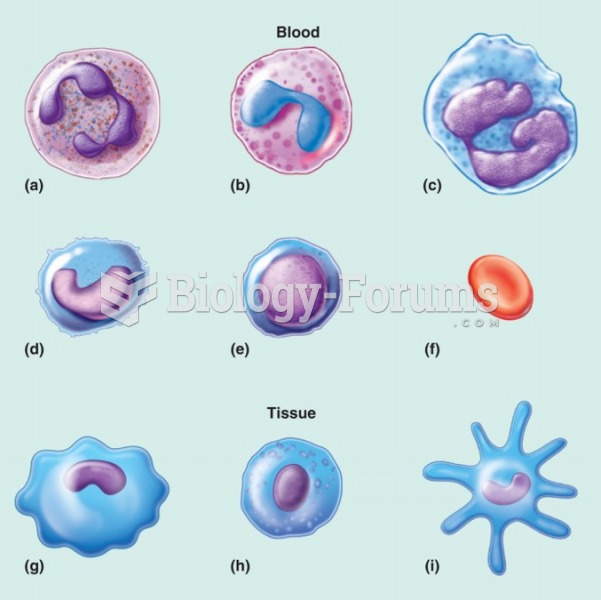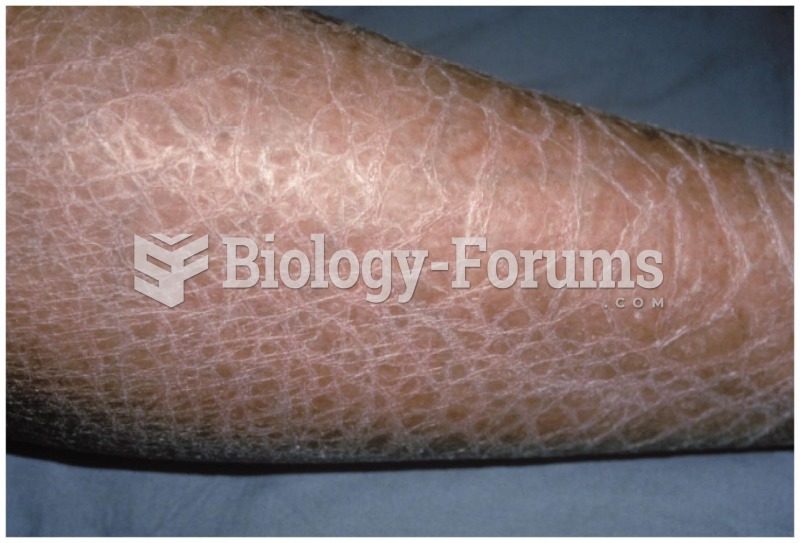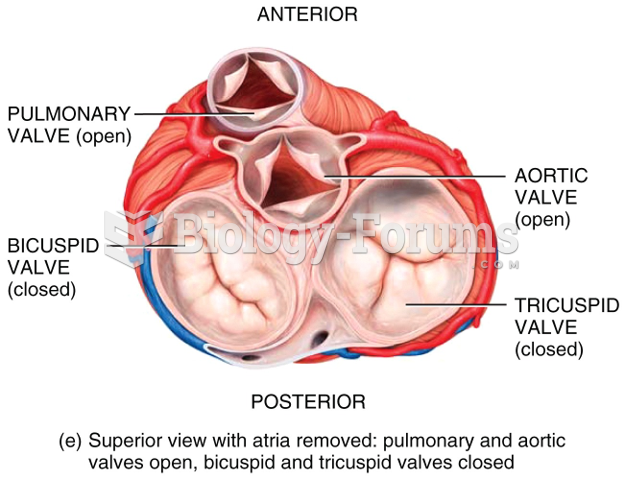|
|
|
If you could remove all of your skin, it would weigh up to 5 pounds.
About 100 new prescription or over-the-counter drugs come into the U.S. market every year.
Vaccines prevent between 2.5 and 4 million deaths every year.
Pink eye is a term that refers to conjunctivitis, which is inflammation of the thin, clear membrane (conjunctiva) over the white part of the eye (sclera). It may be triggered by a virus, bacteria, or foreign body in the eye. Antibiotic eye drops alleviate bacterial conjunctivitis, and antihistamine allergy pills or eye drops help control allergic conjunctivitis symptoms.
Most fungi that pathogenically affect humans live in soil. If a person is not healthy, has an open wound, or is immunocompromised, a fungal infection can be very aggressive.
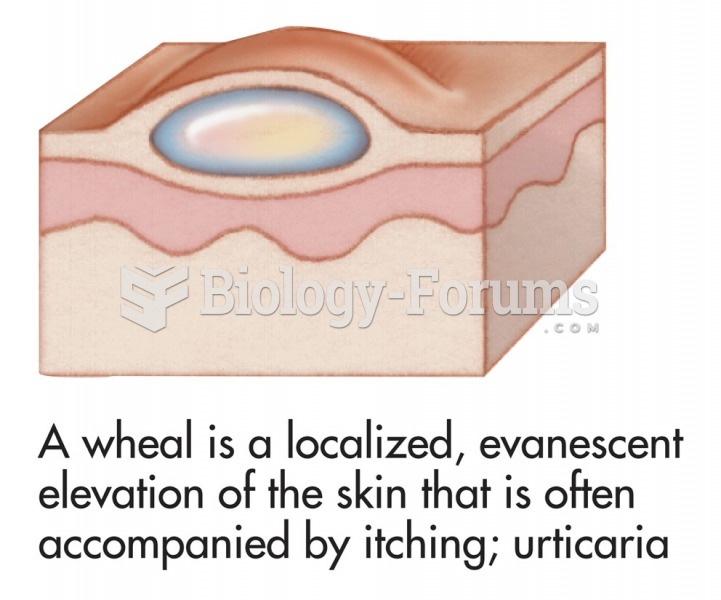 Common skin signs are often evidence of an illness or disorder. A wheal is a localized, evanescent ...
Common skin signs are often evidence of an illness or disorder. A wheal is a localized, evanescent ...
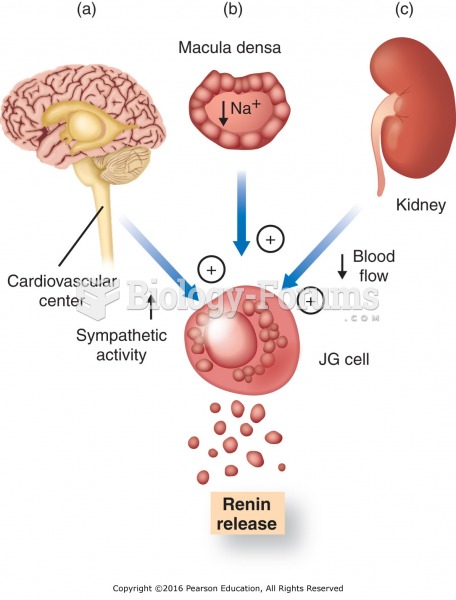 Overview of factors affecting renin release: (a) activation of the sympathetic nervous system; (b) ...
Overview of factors affecting renin release: (a) activation of the sympathetic nervous system; (b) ...


